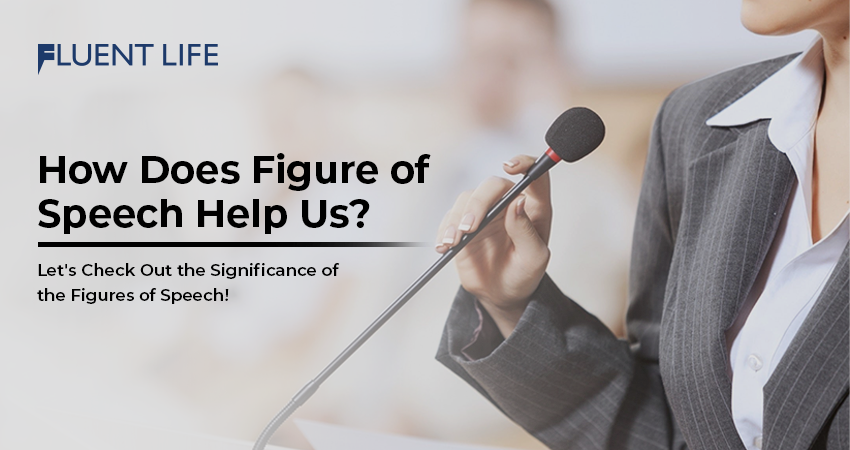Figures of speech, also known as rhetorical devices or literary devices, are creative and expressive techniques used in language to go beyond the literal meaning of words. They add depth, vividness, and emphasis to communication, making it more engaging and impactful. Figures of speech are widely used in both spoken and written language, including literature, poetry, speeches, and everyday conversations.
Also Read: How to Improve your English Skills for the Tech Industry?
Figures of Speech
There are numerous types of figures of speech, each serving a specific purpose in enhancing expression and creating memorable experiences for the audience. Some common figures of speech include:
Simile: A comparison between two different things using “like” or “as.” Example: “She was as busy as a bee.”
Metaphor: A comparison between two different things without using “like” or “as,” often used to describe one thing in terms of another. Example: “Life is a journey.”
Personification: Giving human attributes or qualities to non-human entities. Example: “The sun smiled down on us.”
Hyperbole: Exaggerating a statement for emphasis or effect. Example: “I’m so hungry I could eat a horse.”
Alliteration: Repetition of the same initial consonant sound in a series of words. Example: “Peter Piper picked a peck of pickled peppers.”
Onomatopoeia: Using words that phonetically imitate the natural sound they represent. Example: “The clock ticked and tocked.”
Oxymoron: Combining contradictory or opposite terms for a heightened effect. Example: “Bitter sweet.”
Pun: A play on words that exploits multiple meanings or sounds of a word for humor or wordplay. Example: “I’m reading a book on anti-gravity. It’s impossible to put down!”
Irony: Expressing a meaning that is opposite to the literal or intended meaning for humorous or critical effect. Example: “The fire station burned down.”
Euphemism: Using mild or indirect words to replace harsh or unpleasant ones. Example: “He passed away” instead of “He died.”
Figures of speech add flair, style, and artistry to language, allowing writers and speakers to engage their audience and convey complex ideas effectively. They evoke emotions, create vivid imagery, emphasize key points, and encourage critical thinking. Figures of speech are essential tools that enrich communication and enable us to connect with others on a deeper level, making language an intricate and powerful means of expression.
Also Read: What are Contractions in English Grammar? Let’s Learn English Grammar to Boost Confidence!
How Does Figure of Speech Help Us?
Figures of speech, also known as rhetorical devices, are the artistic tools of language that go beyond literal meaning and add depth, creativity, and vividness to our expressions. They play a vital role in empowering communication by enhancing the impact of our words and creating memorable experiences for our audience. In this article, we will delve into the ways figures of speech help us in various aspects of communication and why they are essential in both spoken and written language.
# Enhancing Expression and Creativity:
Figures of speech enable us to break free from mundane language and explore the bounds of creativity. By employing similes, metaphors, and personifications, we can craft imaginative descriptions that paint vivid mental images. This artistic expression adds flair to our communication, making it more engaging and captivating for the audience. Through figures of speech, we can breathe life into our words, transforming them into powerful vehicles of emotion and ideas.
# Creating Powerful Imagery:
One of the key benefits of using figures of speech is their ability to create powerful imagery. Whether it’s comparing a smile to the radiance of the sun or personifying the wind whispering through the trees, these rhetorical devices help the audience visualize and experience the message on a deeper level. By appealing to the senses and emotions through vivid imagery, we can make our communication more impactful and memorable.
# Emphasizing Key Points:
Figures of speech serve as excellent tools for emphasizing key points and making them stand out in our communication. By using techniques like hyperbole, repetition, and alliteration, we can draw the audience’s attention to critical ideas or concepts. This emphasis helps in clarifying the central message and ensures that important information is retained by the audience.
# Adding Humor and Wit:
Figures of speech can infuse humor and wit into our conversations and writing. Puns, oxymorons, and irony provide a playful twist to language, sparking laughter and amusement in the audience. Humor not only makes communication more enjoyable but also helps in building connections with the audience and fostering a positive atmosphere.
# Evoking Emotions:
The use of figures of speech is a powerful way to evoke emotions and connect with the audience on a deeper level. Metaphors and similes, in particular, allow us to relate abstract concepts to familiar experiences, making them more relatable and emotionally impactful. By touching the audience’s emotions, we can inspire empathy, sympathy, and understanding, fostering a stronger connection between the communicator and the listeners or readers.
# Engaging the Audience:
Figures of speech play a significant role in engaging the audience’s attention. In speeches, presentations, or storytelling, these rhetorical devices prevent monotony and keep the listeners actively involved. A well-placed figure of speech can pique curiosity, create suspense, or incite thought, making the communication more dynamic and interactive.
# Encouraging Critical Thinking:
Figures of speech often challenge the audience to think beyond the literal meanings of words. This encourages critical thinking and analysis as listeners or readers try to decipher the underlying messages or symbolism. By stimulating the audience’s intellect, figures of speech promote deeper engagement with the content and enhance the overall impact of the communication.
# Enhancing Cultural Understanding:
Figures of speech are deeply embedded in various cultures and languages, often reflecting unique values, beliefs, and experiences. By exploring these rhetorical devices, we gain insights into cultural nuances and historical contexts. This promotes cross-cultural understanding and appreciation for diverse forms of expression, fostering a more inclusive and connected global community.
Also Read: 20 Vocabulary Words You Should Use More Often: Here’s Impressive Vocabulary for Everyday Use
Conclusion
Figures of speech play a pivotal role in empowering our communication. They enhance expression and creativity, create powerful imagery, emphasize key points, add humor and wit, evoke emotions, and engage the audience. By incorporating these rhetorical devices into our language, we elevate the impact of our words and create memorable experiences for our listeners or readers. Figures of speech serve as powerful tools that enrich communication, enabling us to convey ideas and emotions in a way that transcends the boundaries of ordinary language. Embrace the artistry of figures of speech and unleash the full potential of your communication. Let’s check out the Fluent Life website for mentorships, guidance, and more details!






